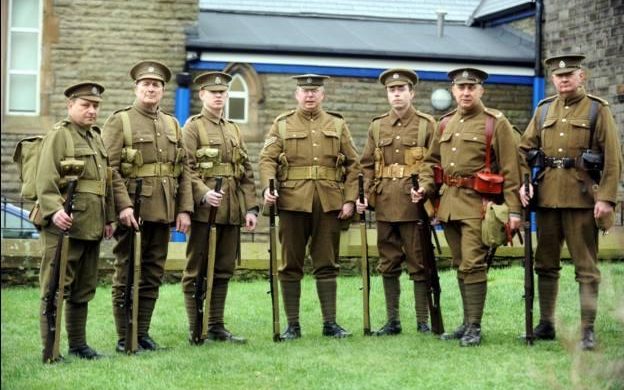Members of the Great War Society, a WWI re-enactment group which represents the Accrington Pals, has come under scrutiny for anti-terror laws after attempting to travel to France with antique rifles to commemorate the 100th anniversary of the Battle of the Somme.
The Lee-Enfield bolt-action rifles, while disabled, still attracted attention after the most recent terror attacks in Paris. Instead of using their own rifles, thought to date back to 1907, the group was told to buy replica rifles in France for £1,200 to use in their reenactment of the Pals’ advance across “No Man’s Land” towards German lines.
Unfortunately, members of the society caught with their rifles still faced charges for firearms offenses. These members would have been protected by Section 36 of the Violent Crime Reduction Act of 2006, which allows for the possession of realistic firearms for use in theatrical performances.
Scott Knowles, the 53-year old grandson of PVT Billy Knowles, who survived the battle, was upset because the firearms clearly could not be discharged in any manner, but still the society had to purchase replicas to honor the WWI veterans even after having the support of the French ambassador, MEPs, and the local MPs. He blamed the incident on bureaucratic red tape.
British law allows for the use of real firearms in reenactments under the condition that the firing pin channel has been sealed shut with a weld. Under the new EU Firearms Directive, however, rifles are required to have their magazines fixed or blocked. This presents a problem, though, as this would partially destroy the century old rifles and reduce their value.
Through the entire headache, the society is still dedicated to honoring veterans by traveling to France and carrying out their reenactment. Currently, the society is still sorting through the legal process. The UK Home Office told the society their rifles were permissible, but to their remiss, the bayonets were not
Representatives from the EU are trying to help the society cut through the red tape and expedite their travel to the French village Mailly-Maillet where they intend to set up camp. The 60 man group will wear World War I attire, march across No Man’s Land, and offer prayers for the fallen to honor WWI veterans. Additionally, the group will form a guard of honor for civic dignitaries to include the Mayor of Hyndburn and reverse march as a sign of respect.
A Home Office spokesman voiced the office’s perspective on the situation. He commended the UK for their stringent anti-gun laws and stated that the country would uphold these laws to protect their citizens. The office only asks that any people traveling to conduct reenactments respect the UK laws while traveling through the country.
What is the Pals Battalion? WWI Secretary of State for War Horatio Kitchnener and General Sir Henry Rawlinson formed the Pals Battalion, officially the 11th Service Battalion Accrington, East Lancashire Regiment, in an attempt to create a highly motivated, close knit group of soldiers to carry out daring missions during the war. The Pals were ordered to attack the village of Serre on the first day of Somme to secure a defensive flank for the rest of the British forces. Unfortunately, 235 members were killed and 350 wounded in just a half hour. Members in the rear witnessed this slaughter and carried the memories of carnage with them for the rest of their lives.
